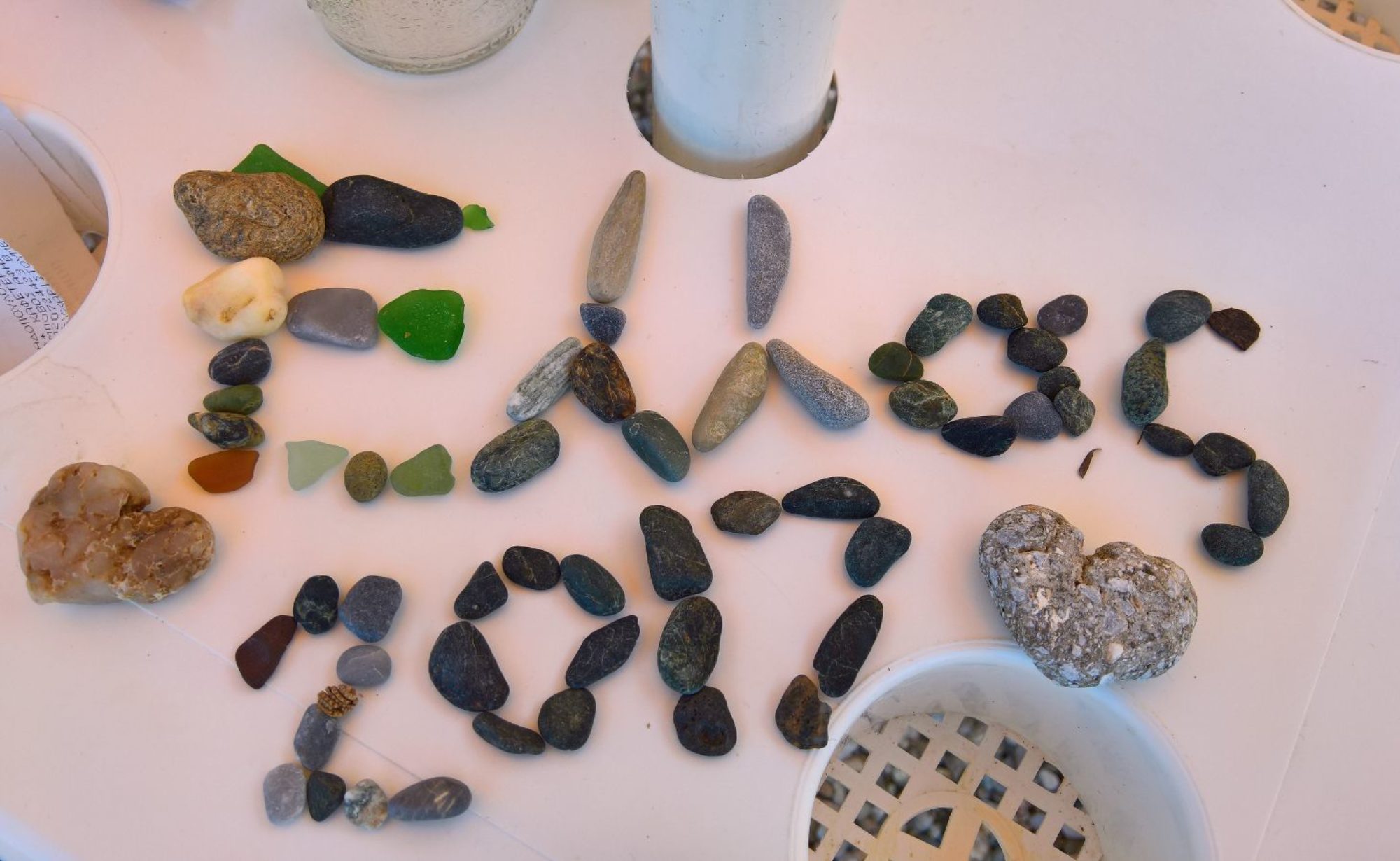After our intense Vimy experience, we were happy to spend the day making our way to our rented Normandy farmhouse near Villedieu des Poêles. As we drove there, we made a slight detour to Blainville sur Orne (near Caen) to see the home where A. lived for six months in 1993. Fortunately, it was also close to the Pegasus Bridge (a strategic D-Day paratrooper landing spot). The kids found the history of the site very interesting and laid the start of our Second World War focus with the Normandy beaches.
Our farmhouse was exactly what we hoped for: a quiet, picturesque base that was fully stocked for comfortable week of exploration in Normandy and Brittany.

Our highlights for this time are:
Bayeux Tapestry
The kids had read about the tapestry in an issue of Youpi! (their French language magazine) and were excited to see it in person. The museum does a great job of explaining the tapestry through an audio guide as you walk along beside it. There is also a fantastic museum and film that explores the historical of the tapestry. It was interesting to make the connection between Willam the Conqueor and the Tower of London. We also had the chance to explore the lovely town of Bayeux and replicate a photo A. had taken 20 years ago with her friend!

Juno Beach and the Canadian Second World War Cemetary (Corseulles-sur-Mer)
It is hard to imagine the feeling of Canadian soldiers scrambling over the sand at Juno beach. The dunes are high and gave the German bunkers an incredible advantage. T. had read a lot of the books on WWII that were in our Airbnb, and he had a surprising amount of information about the heavily artillery guns on the beach. Clearly, it is a topic that fascinates him. We were also able to explore the bunkers and briefly visited the interpretive centre.

The Canadian cemetery was moving but in a very different way than Vimy. It was very calm and quiet, with few other visitors. Fortunately, we were there the day after the Trudeau family had visited (we passed their motorcade on our way to Normandy). The cemetery is very symmetrical and the architecture adds an element of visual calm and beauty to a sacred place.
Mont St Michel
Even though A. had been here twice before chaperoning school trips, she was generous enough to support another visit. The old town is full of tacky tourist shops, but the views from the walls are vast, overlooking the muddy flats where the tide has reversed. The kids had also read about Mont St Michel in their Youpi! magazine so were quite interested in the historical background of the place.





Cancale/St Malo/Pointe de Grouin
We originally went to Cancale at the recommendation of our Belgian-Finnish friends. Three weeks previously, in Brussels, we learned they would be in Cancale at the same time and we agreed to meet for lunch. It far exceeded our expectations of what a Brittany port town would be like. The quaint homes along the water, the oyster farm cages and the huge piles of oyster shells from the vendors who sell them fresh from their stalls all combined to make unique seaside experience. You can buy a dozen oysters for EUR5 and eat them with fresh lemon on the breakwater wall. Apparently, the Cancale oysters are among the best in the world and Napoleon insisted on a daily delivery of Cancale oysters while on his military campaigns. We had a delicious seafood lunch with langoustine, shrimp, two types of oysters, whelk, periwinkles and crab. Delicious and washed down with some chilled Muscadet. It was a spectacular lunch with excellent company!
 Visitors eating fresh oysters on the sea wall
Visitors eating fresh oysters on the sea wall

And the resulting pile of oyster shells!
Further along the peninsula is the Pointe de Grouin, a regional park with dramatic landscape. We went to undertake some science observations for the kids on marine ecosystems (based on similar work A. had done with her students almost 20 years ago). The tide pools were full of sea creatures and, thanks to T’s eagle eyes, we saw a sea anemone.


Finally, we reached St Malo and explored the fortified old town looking out over the Atlantic where Jacques Cartier set sail to “discover” the east coast of Canada and the St Lawrence. It was very interesting to see how the architecture of Quebec City imitates that of Brittany. The homes in Canacale and St Malo could easily be found in Old Quebec or Montreal.



One of the overarching educational themes for our trip is identity and exploring our roots collectively as Canadians but also as individuals and a family. The Vimy, Juno Beach, Canadian War Cemetery and Jacques Cartier’s departure point all helped to spark family discussions about identity and what it means to be Canadian.
Next stop: the Loire Valley!







